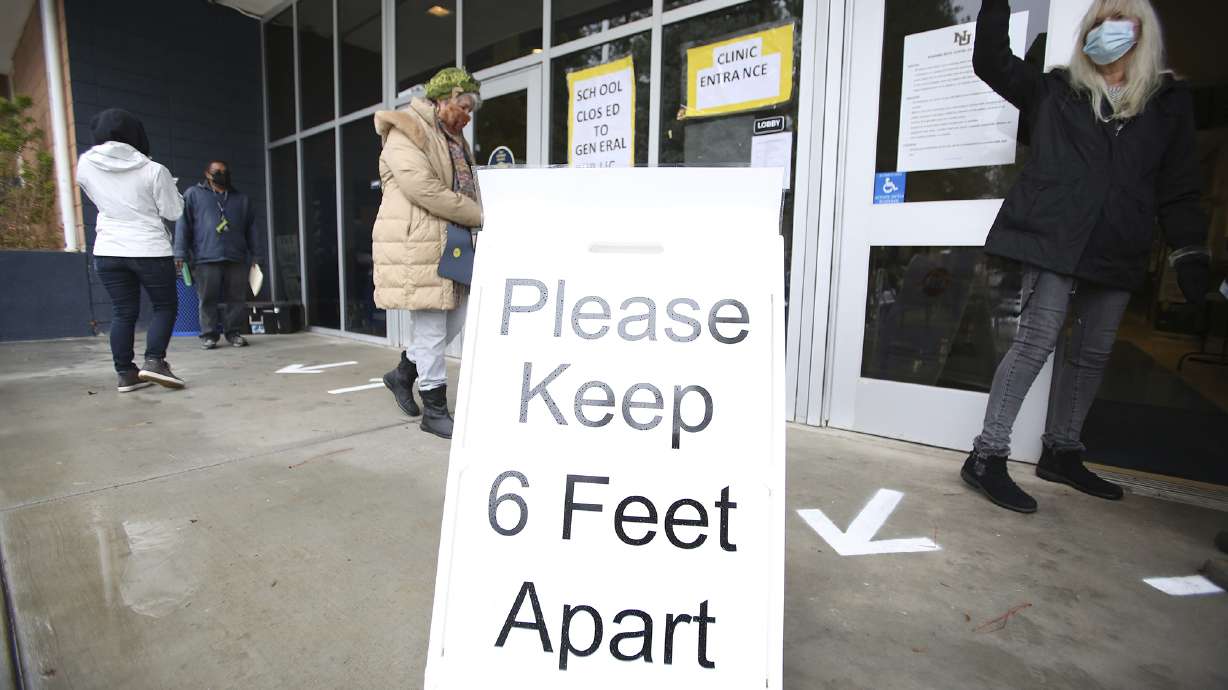Estimated read time: 5-6 minutes
This archived news story is available only for your personal, non-commercial use. Information in the story may be outdated or superseded by additional information. Reading or replaying the story in its archived form does not constitute a republication of the story.
SALT LAKE CITY —As expected, the Centers for Disease Control and Prevention have eased guidelines for dealing with COVID-19.
The federal agency said in a news release Thursday that even though the coronavirus continues to spread globally, "with so many tools available to us for reducing COVID-19 severity, there is significantly less risk of severe illness, hospitalization and death compared to earlier in the pandemic."
The new recommendations no longer call for people exposed to COVID-19 to quarantine, even if they are not vaccinated against the virus. Social distancing, once seen as key to preventing infections, is only briefly mentioned as "just one component of how to protect yourself and others."
Last week, CNN reported changes to the guidelines were coming. Here's what the CDC announced:
- Not vaccinated? You no longer need to quarantine if you're exposed to someone with COVID-19, but you should wear a high-quality mask for 10 days and get tested on Day 5.
- Have COVID-19? You should isolate from others regardless of your vaccination status.
- Feeling sick? Isolate if you suspect you've got COVID-19 until you have test results.
- If you test positive, you should stay home and isolate from others in the household for at least five days, when you are likely to be most infectious. Masks should be worn around others and in public through Day 10.
- Five days after a positive test, if you are fever-free for 24 hours without the use of medication, and your symptoms are improving, or you never had symptoms, you may end isolation. Avoid being around people who are more likely to get very sick from COVID-19 until at least Day 11.
- If you had moderate illness with shortness of breath or difficulty breathing, or severe illness that required hospitalization, or have a weakened immune system, you need to isolate through Day 10. Anyone with severe illness or a weakened immune system, should consult a doctor before ending isolation.
- If your COVID-19 symptoms worsen after ending isolation, start over at Day zero.
- Consider the risk in a particular setting, including the CDC's community levels for COVID-19, determined for each county based on case counts and hospital admissions and capacity, as well as the "important role" of ventilation to assess the need to maintain physical distance.
- Stay up to date on COVID-19 vaccinations, including booster shots for anyone 5 and older and a second booster dose for anyone 50 and older or who has certain medical conditions. Vaccines still protect against severe illness and death, although variants of the virus are better able to evade immunity from the shots or previous infections.
"We're in a stronger place today as a nation, with more tools — like vaccination, boosters, and treatments — to protect ourselves, and our communities, from severe illness from COVID-19," Greta Massetti, a CDC epidemiologist said in a news release.
"We also have a better understanding of how to protect people from being exposed to the virus, like wearing high-quality masks, testing, and improved ventilation," she said. "This guidance acknowledges that the pandemic is not over, but also helps us move to a point where COVID-19 no longer severely disrupts our daily lives."
The American Federation of Teachers, one of the nation's largest teachers unions, said it welcomes the guidance.
"Every educator and every parent starts every school year with great hope, and this year even more so," President Randi Weingarten said. "After two years of uncertainty and disruption, we need as normal a year as possible so we can focus like a laser on what kids need."
The new recommendations prioritize keeping children in school as much as possible, said Joseph Allen, director of Harvard University's healthy building program. Previous isolation policies forced millions of students to stay home from school, he said, even though the virus poses a relatively low risk to young people.
"Entire classrooms of kids had to miss school if they were deemed a close contact," he said. "The closed schools and learning disruption have been devastating."
Others say the CDC is going too far in relaxing its guidelines.
Allowing students to return to school five days after infection, without proof of a negative COVID-19 test, could lead to outbreaks in schools, said Anne Sosin, a public health researcher at Dartmouth College. That could force entire schools to close temporarily if teachers get sick in large numbers, a dilemma that some schools faced last year.
"All of us want a stable school year, but wishful thinking is not the strategy for getting there," she said. "If we want a return to normal in our schools, we have to invest in the conditions for that, not just drop everything haphazardly like we're seeing across the country."
Contributing: The Associated Press









